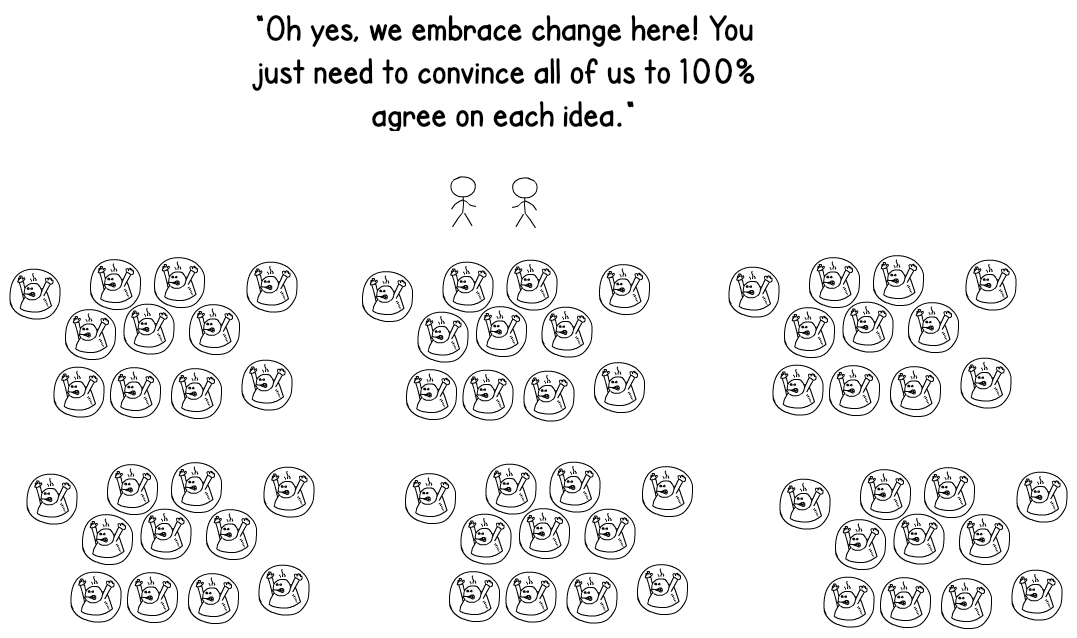Guiding Principle: Consent Over Consensus
Guiding principle in effective product development culture.
Unilateral decisions lead to false progress.
When decisions are made unilaterally, it tends to lead to false progress. You’re unlikely to have buy-in and you miss out on any perspective that the broader group might have had.

Consensus leads to slow decision-making.
When decisions are made by consensus, decisions can take a long time, and may never resolve. The more people that are involved in a consensus decision, the worse this will get.
Consensus is essentially a universal veto which can systemically bog down progress by placing all the burden on anyone who proposes change. This is known as the consensus trap.

Instead, consider consent over consensus.
Better collective decision-making processes are generally based on consent, not consensus.
“Consensus” means everyone is for the decision, “consent” only means that no one is actively against the decision. This also known as “acceptance” over “agreement”. Reaching consent is much easier than consensus while still enabling buy-in and multiple perspectives.
Consent over consensus shifts the burden to objectors. If the proposal is safe enough to try with no reasoned, substantial objections, then our default position is to proceed.
If there is a reasoned, substantial objection, it must be considered.
It is important in a consent-based decision-making process that any reasoned, substantial objections are actually considered and not just ignored.
Otherwise, we’re just back to unilateral decisions hidden behind phony consent.
Not everyone needs to provide consent for every decision.
If a person is not really contributing any knowledge, nor is impacted by the result of a decision, it doesn’t make sense that their consent is required before the decision is made.
Also, because it is difficult to have in-depth conversations with a lot of people, it is generally useful to use smaller representative groups when drafting decisions.
When even consent is bogged down, predetermine a tiebreaker
It is possible even when only consent is required that a decision is still bogged down, especially if there are time constraints for when a decision must be made. In these situations, it is useful to have predetermined a tiebreaker (or tiebreaking mechanism) to progress despite the inability to actually get full consent.
